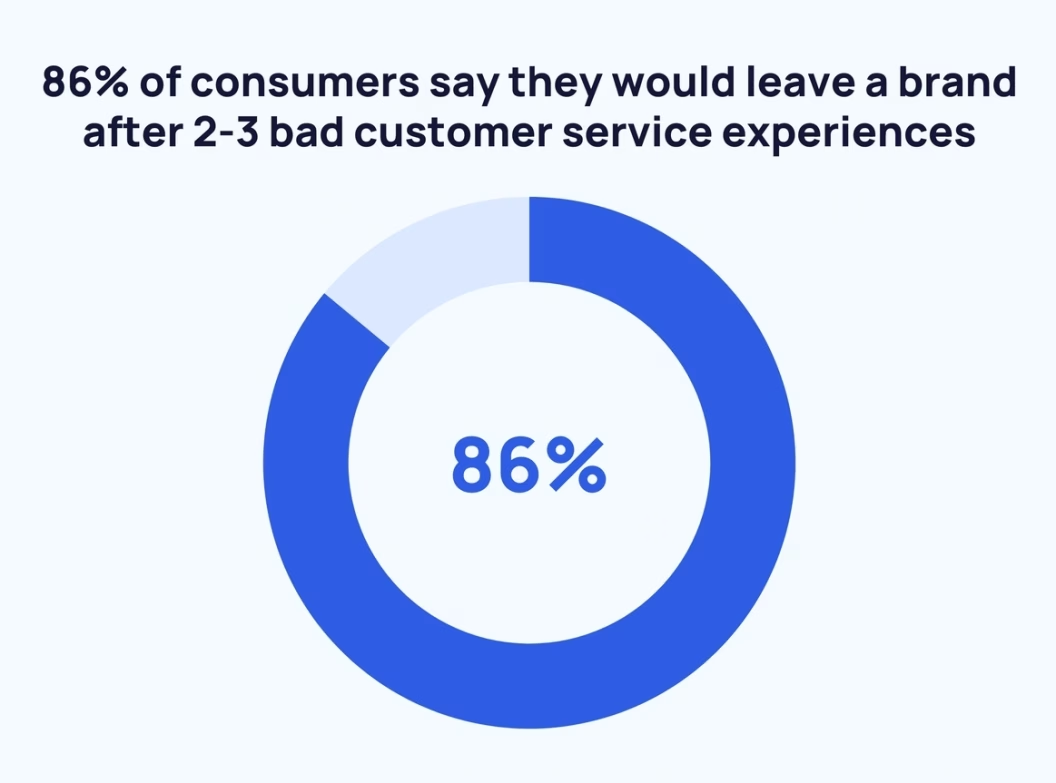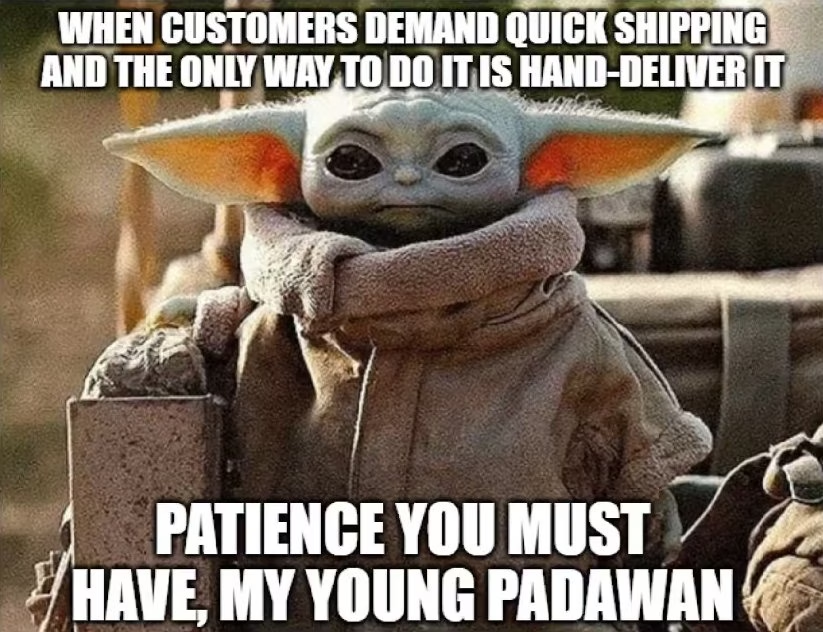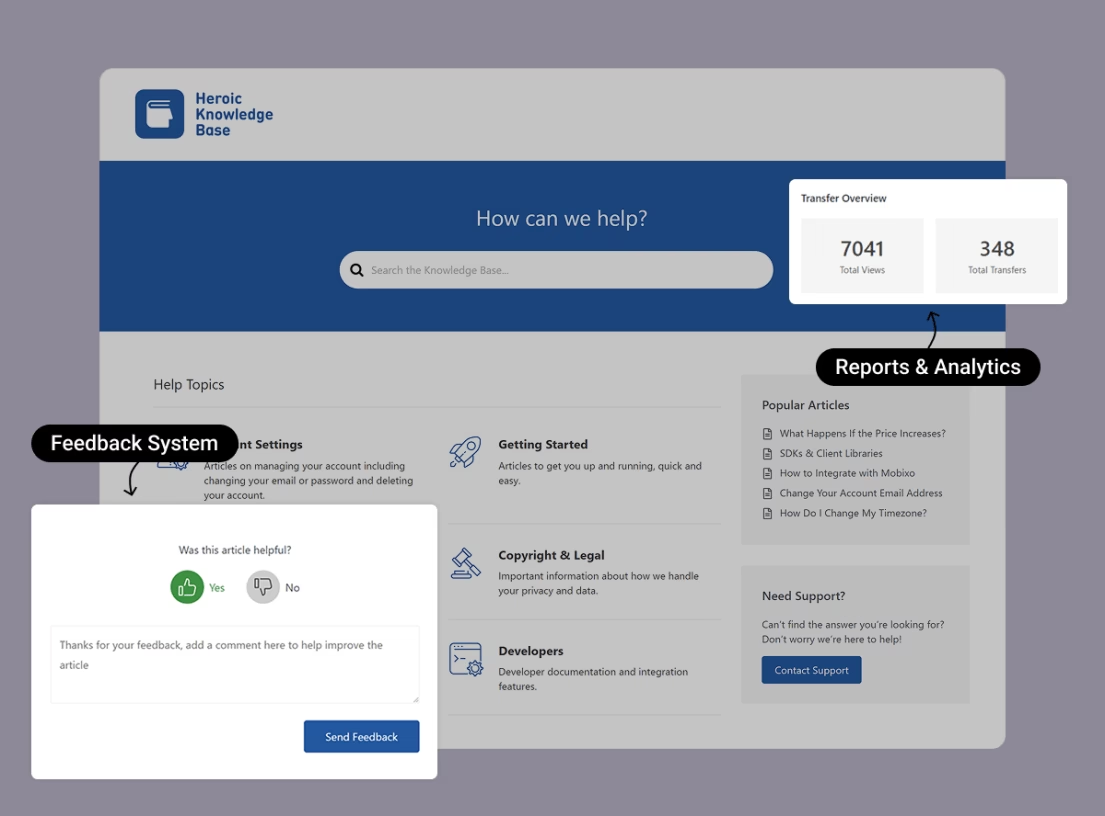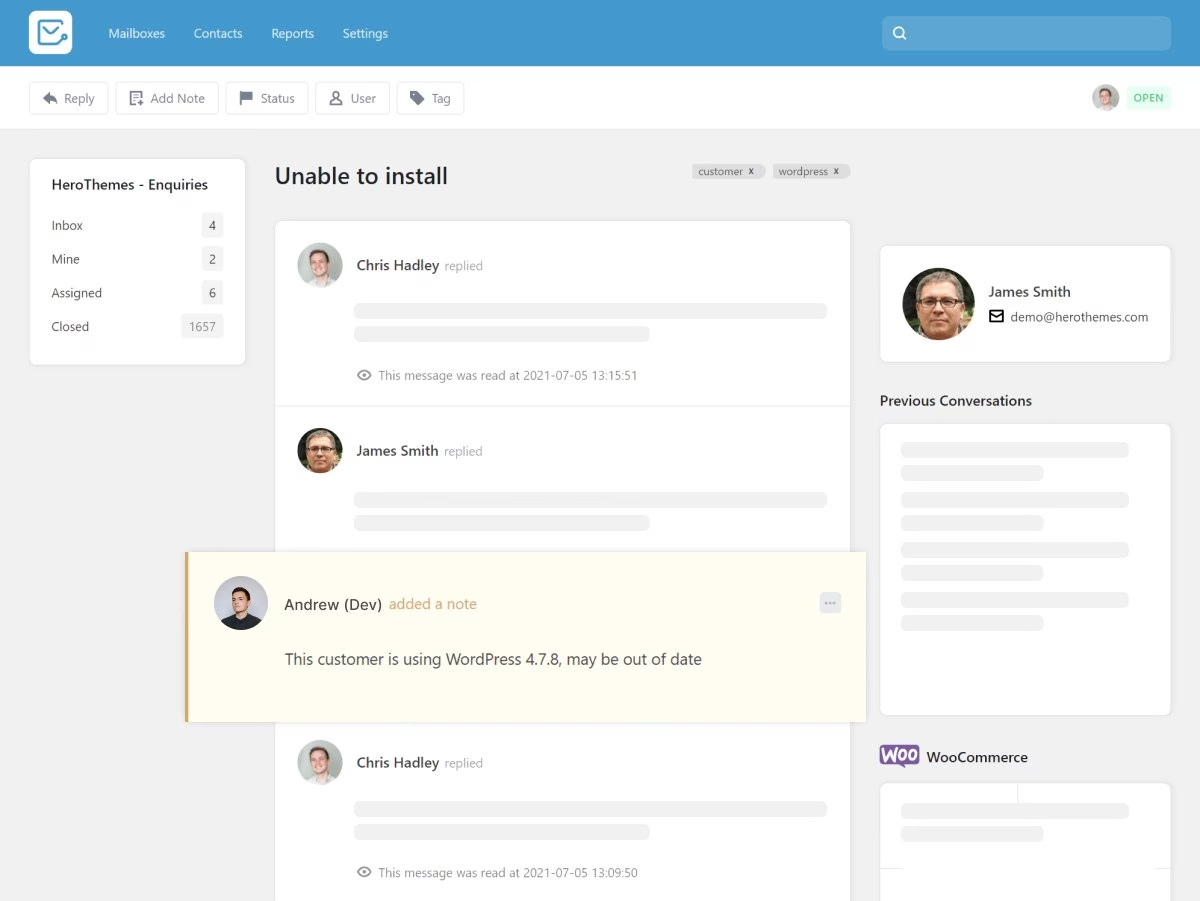Customer Service in Dropshipping: Best Practices, Tips, and Tools

You can’t cut the cost of customer service in the dropshipping business.
In dropshipping, you might not handle inventory or shipping, but you do have to deal with customers. This includes answering questions, resolving issues, and keeping buyers happy.
If you are just starting out with dropshipping or are an established eCommerce brand, this guide will explain what customer service in dropshipping looks like, address the common questions, and share actionable tips and best practices.
By the end, you’ll know how to handle customer service in dropshipping confidently and honestly. Let’s start!
In This Guide
- Do You Have to Deal with Customers When Dropshipping?
- What Does Customer Service in Dropshipping Look Like?
- Why Great Customer Service Matters in Dropshipping
- Best Practices for Dropshipping Customer Service
- 1. Set Clear Expectations with Policies and Transparency
- 2. Choose Reliable Suppliers and Shipping Methods
- 3. Communicate Proactively and Respond Quickly
- 4. Offer Multiple Support Channels (Meet Customers Where They Are)
- 5. Build a Strong Knowledge Base and FAQ Section
- 6. Use Helpdesk Tools (Like Shared Inboxes and Automation) to Streamline Support
- 7. Handle Returns, Refunds, and Chargebacks Gracefully
- 8. Continuously Learn and Improve
- Final Thoughts

We rigorously test and research every product that we recommend through HeroThemes. Our review process. We may also earn a commission if you make a purchase through our links.
Do You Have to Deal with Customers When Dropshipping?
Yes, absolutely.
A big myth about dropshipping is that you can simply sit back while suppliers do all the work. In reality, you are the retailer, and customers will expect you to provide service.
The supplier’s job is just to fulfill orders behind the scenes; they typically won’t talk to your customers at all. So, if a customer has an issue, it’s on you to handle it.
For example, even though you don’t ship items yourself, you’ll get customer emails about late packages or requests for order changes.
For beginner dropshippers, this means you should be prepared to answer customer inquiries from day one.
The good news is that in the very beginning, volume will be low. You might only have a few orders, so it’s manageable to handle support on your own. In fact, many successful dropshippers report that serious issues (like returns or angry complaints) are relatively rare if you choose decent products and suppliers.

A beginner dropshipper’s opinion from Reddit.
In other words, don’t be scared off. Most customers won’t give you a hard time as long as you set expectations properly.
As your business grows, you will continue to “deal with customers,” but how you handle it may evolve. An established eCommerce brand will:
- Hire a support team or outsource customer service
- Invest in helpdesk software or additional staff once order volume increases
So the business owner isn’t answering every email personally.
What Does Customer Service in Dropshipping Look Like?
In a traditional online store, you control inventory and shipping. In dropshipping, those logistics are handled by your supplier.
But customer-facing issues still land on your plate. This means you’ll field questions like:
- Where’s my order?
- handle complaints about shipping delays or damaged items
- manage returns or exchanges
This is essentially crucial when you act as the bridge between the customer and the supplier.
Most dropshipping store owners often spend a good chunk of time on customer support tasks.
Key Customer Service Tasks in Dropshipping:
- Answering Pre-Sale Questions: Customers may ask about product specs, shipping times, or policies before buying. You need clear, prompt answers to build trust.
Explore: Shipping Email Subject Lines: 6 Templates for 2025 - Post-Purchase Support: After ordering, customers will look to you for order tracking info, status updates, and help if any issue arises (late shipment, wrong item delivered, etc.).
- Handling Problems: If a product arrives broken or not at all, you’ll handle the complaint. Coordinating with the supplier in the background but communicating with the customer yourself.
- Returns and Refunds: Even though the supplier stocks the product, you must facilitate any returns or refunds according to your store’s policy. This often means instructing the customer on next steps, or sometimes issuing a refund without a return if the supplier doesn’t manage returns directly.
In short, dropshipping customer service involves all the usual eCommerce support duties, just with the added challenge that you rely on a third-party supplier to fulfill orders.
You still have to be responsive, helpful, and solutions-oriented. The main difference is that you’ll be relaying information between the customer and your supplier.
Why Great Customer Service Matters in Dropshipping
In the world of dropshipping, excellent customer service isn’t just a “nice to have”, it’s crucial for survival.
Remember, when you sell the same products as others, service is your differentiator.
Many dropshipping stores have a bad reputation for slow shipping and unresponsive support, so a store that shines in customer care can stand out and build trust.
Consider this fact, 86% of consumers will leave a brand after only 2 poor customer service experiences.

That means if you ignore customers or handle issues poorly, you could lose nearly nine out of ten potential repeat buyers. A recipe for failure.
People remember being treated well. If you go above and beyond to help a customer, you’re more likely to get positive reviews, repeat purchases, and word-of-mouth referrals.
Especially for dropshipping stores, customer service is vital because you often ask customers to trust you with longer shipping times or overseas fulfillment.

Explore: Top 11 Referral Email Subject Lines
Best Practices for Dropshipping Customer Service
To run a smooth dropshipping operation, you’ll want to implement some proven customer service strategies.
Below are the essential tips for beginners and scaling brands alike, including how to handle tough situations (like delays or angry customers) and ways to streamline your support as you grow.
Feel free to share these with your customer support team as standard operating procedures.
1. Set Clear Expectations with Policies and Transparency

Manage expectations from the start to prevent issues.
One of the first rules of dropshipping customer service is to be upfront with your customers. Because dropshipping often involves longer shipping times (especially if you’re shipping internationally), it’s critical to let customers know what to expect before they place an order.
Make sure your website clearly states:
- Typical shipping times
- Processing times
- Any potential delays
For example, if shipping from your supplier in China usually takes 10–15 days, inform the customer of this on the product page or in the FAQ.
Having detailed policies and an FAQ page is key. Include pages for Shipping & Delivery, Returns & Refunds, and any other important terms. Spell out things like how long delivery usually takes, how your return process works, and how customers can contact you for help.
This transparency greatly reduces confusion and frustration.
In addition to static policy pages, you can manage expectations through proactive communication such as order confirmation emails that reiterate shipping timeframes.
The goal is no surprises for the customer. As a result, you’ll face fewer “Where is my order?!” support tickets because customers were informed from the get-go.
To implement this with your dropshipping customer service:
- Create a comprehensive FAQs/help center: Cover common questions about shipping duration, tracking, returns, product quality, etc. An informed customer won’t need to email you for every little question. This also reduces your support workload.
- Highlight key policies at checkout or in order confirmation: Remind customers of the expected delivery window in their confirmation email. This manages anxiety and shows professionalism.
- Be honest about potential issues: If certain products might have customs fees or slightly different appearance than photos, let customers know upfront. Honesty builds trust.
By setting clear expectations, you’ll prevent a lot of complaints. Customers appreciate honesty, and a clear dropshipping customer service policy can turn potential complaints into understanding.
2. Choose Reliable Suppliers and Shipping Methods

An often overlooked aspect of customer service is picking the right suppliers.
The quality of your supplier’s performance directly impacts your customer satisfaction. If you partner with unreliable suppliers who ship late, send the wrong items, or have poor quality control, you’ll be the one fielding angry emails and refund requests.
So, one of the best ways to handle customer service is actually to prevent problems at the source.
To find a reliable supplier:
- Check supplier reviews and ratings
- Test-order products to see how the packaging and shipping times are
- Ensure they have a system for handling returns or defects
It’s also wise to have backup suppliers or a diversified supplier base for key products.
Additionally, pay attention to shipping methods offered by the supplier. Whenever possible, use suppliers or agents that can provide faster shipping or ePacket options, even if it costs a bit more – customers will appreciate getting items sooner.
3. Communicate Proactively and Respond Quickly
Speed and honesty are your best friends in customer service.
Proactively keeping customers informed can dramatically improve satisfaction.
Proactive communication means you don’t wait for a customer to ask “What’s going on with my order?” – you reach out first with updates.
For example, if there’s a slight shipping delay or any issue with their order, email the customer immediately to explain the situation and what you’re doing about it.
Even a simple email like “Hey, we wanted to let you know your package cleared customs and is on its way, but there might be a 3-4 day delay due to a local holiday. We’re monitoring it and will update you” can turn a potentially worried customer into a grateful one.
Beyond being proactive, fast response times to incoming inquiries are critical. In today’s world, people hate waiting.
Customers expect quick answers, often within hours.
Here are some best practices to help you improve communication with your customers:
- Aim to answer all customer emails and messages as fast as you realistically can, ideally within 24 hours or less (within a few hours is even better, especially for urgent issues).
- If you can’t fully resolve something immediately, at least acknowledge the message and let the customer know you’re on it. It’s also helpful to set the right expectation for response times on your Contact page (e.g., “We typically respond within 1 business day”).
- For busy periods or outside business hours, consider setting up an auto-reply that assures the customer their message was received and gives a timeframe for a full reply.
- Leverage tools to help with speed: use saved email templates or canned responses for common questions to save time drafting replies, and consider chatbots for basic questions if you have the resources.
Many dropshippers integrate a live chat or chatbot on their site so customers can get instant answers to FAQs. These options can handle simple queries immediately, allowing your human team to focus on more complex issues.
Tip: Use the Heroic Inbox helpdesk software to automate repetitive tasks, and Heroic Knowledge Base to create a knowledge base and AI assistance (chatbot). These are the perfect solutions for startups and small businesses.
4. Offer Multiple Support Channels (Meet Customers Where They Are)
Don’t force all customers to use one communication method. Some people prefer email, others feel more comfortable with live chat or even phone calls.
To deliver great service, it’s wise to provide multiple support channels so customers can contact you in the way that’s easiest for them.
Support Through Contact Form Or Email
At minimum, a dropshipping store should have a support email address and a contact form on the website.
Start by setting up a clear “Contact Us” page on your site that lists all the ways to reach support.
For example, provide your support email (like support@yourstore.com), link the live chat widget if you have one, list your customer service phone number if you can manage calls, and even mention your social media handles for support. The contact page should also include your typical support hours (e.g., “Mon–Fri, 9am–5pm EST”) so people know when they can expect a response.
Offering a contact phone number can significantly increase trust – even if most customers never call, seeing a number listed reassures them that you’re a legitimate business.
Live Chat Support
Live chat is a popular channel for eCommerce support because it gives customers real-time answers. You can use live chat software or chatbots on your site that either connect to you/your team or provide automated help for FAQs.
Social Media Support
Don’t forget social media: customers might reach out via Twitter, Facebook, or Instagram with questions or complaints. It’s important to monitor those channels and reply promptly there too or gently redirect them to your official support channel.
5. Build a Strong Knowledge Base and FAQ Section
One of the smartest moves for dropshipping support, especially as you scale, is to create a knowledge base.
A knowledge base is basically a collection of help articles, FAQs, and guides on your website where customers can find answers on their own. This can dramatically reduce your support workload by deflecting repetitive questions.
In fact, a good knowledge base “is a must have, so customers can solve issues on their own”, allowing you to answer common questions before they turn into support tickets.
Think of all the questions you get over and over: “How do I track my order?”, “What is your return policy?”, “Does this product come in size XL?” If you document these in a clear FAQ or help center, customers can get answers instantly without waiting for a reply.
To build a strong knowledge base, start by compiling the frequently asked questions about your store and products.
Include sections on:
- Shipping and delivery. E.g. shipping times, how to track orders
- Returns and refunds. E.g. how to initiate a return, any fees or conditions
- Product information and sizing
- Ordering process. E.g. payment methods, how to use discount codes
- Account management if applicable
- Add troubleshooting guides. E.g. What to do if your order hasn’t arrived by X days
If you find yourself answering a question more than a few times, that’s a great candidate for a knowledge base article.
Modern tools like Heroic Knowledge Base makes it very easy to set up and manage a dropshipping store knowledge base.

With Heroic Knowledge Base:
- You just write your articles without any coding knowledge.
- Use categories and tags to categorize them.
- Track performance and find missing guides that customers search for.
- With an instant search bar and optimized navigation, customers can easily find answers.
- Create a ChatGPT-based chatbot to instantly answer customer questions using knowledge base.
Overall, adding a Heroic Knowledge Base or similar self-service portal is a win-win: customers get 24/7 help at their fingertips, and your support team (even if that’s just you for now) enjoys a lighter email load.
6. Use Helpdesk Tools (Like Shared Inboxes and Automation) to Streamline Support
Handling customer service via a basic email account (such as Gmail) can become messy as you grow. To keep providing fast, efficient support, it is best to leverage dedicated customer support tools.
A popular approach is to use a helpdesk or shared inbox software that centralizes all your customer communications in one place.
I recommend testing out Heroic Inbox. It’s a WordPress helpdesk plugin that lets you manage all your support emails and tickets right from your website dashboard.

Tools like Heroic Inbox bring multiple benefits:
- You can connect multiple email addresses (support@, sales@, etc.) into one dashboard.
- Collaborate with team members on replies, assign tickets to specific agents
- Track response times and other customer service metrics
- Automate repeated tasks (guide to customer service automation). For example, automatically tag or prioritize emails that contain words like “urgent” or “not received”, or send an instant acknowledgement email when a ticket comes in.
- Manage customer history with CRM features.
A shared inbox ensures everyone stays on the same page and nothing falls through the cracks.
Even if you’re a solo drop shipper or a beginner, initially, using helpdesk software can keep you organized and ready to scale.
For example, suppose your store’s customer inquiries are coming from all over – emails, a contact form, Facebook messages, maybe even live chat transcripts.
In summary, don’t be afraid to invest in a helpdesk or shared inbox solution as you grow. It will save you time and help maintain high-quality service even when your ticket volume doubles or triples.
Combine that with your knowledge base and some automation (like auto-responders and canned replies), and you’ll have a streamlined customer service machine that keeps response times low and customers happy.
7. Handle Returns, Refunds, and Chargebacks Gracefully
Returns and refunds are a fact of life in eCommerce, and dropshipping is no exception
Eventually, you’ll encounter customers who want to return an item or get their money back. Maybe the product didn’t meet expectations or arrived defective. How you handle these cases is critical.
The best practice is to be generous and hassle-free with legitimate return or refund requests. It might feel painful to refund an order, but remember: a refund is always cheaper than a chargeback.
You can avoid many chargebacks simply by making your customer service easy to reach and by showing customers you’re willing to make things right when they’re disappointed.
Have a Clear Return/Refund Policy
First, have a clear Return/Refund Policy published on your site (as mentioned earlier) so both you and the customer know the guidelines.
But within those guidelines, try to lean towards leniency. For example, if your policy says “returns accepted within 30 days,” and someone reaches out on day 32, it’s often better to honor the return anyway in the name of good service (unless you suspect fraud).
The goodwill you earn can pay off in future sales or in avoiding that customer turning to social media to complain.
Respond With Empathy and Offer a Solution
When a customer emails about an issue: respond with empathy and a solution.
If they got the wrong product or a damaged item, apologize sincerely and immediately tell them you will fix it. Typically, the fix might be offering to reship the correct item at no extra cost.
Since in dropshipping you might not have them physically return the item (especially if shipping costs back to the supplier are high), you can use that to your advantage: often the simplest approach is to refund the customer and let them keep the product (or instruct them to donate it or discard it).
Yes, you’ll take a loss on that order, but you’ll likely keep the customer’s trust.
Avoid Chargebacks
Chargebacks deserve a special mention. If a customer feels ignored or wronged, they might dispute the charge with their bank or PayPal.
Too many chargebacks can threaten your ability to process payments. Payment providers may flag you as high-risk or hold your funds.
That’s why you want to resolve issues before it reaches that point.
8. Continuously Learn and Improve
Finally, remember that great customer service is an ongoing process.
Here’s what you can do to improve your dropshipping customer service experience:
- Collect feedback from your customers and use it to improve your processes.
- Encourage customers to leave reviews or respond to post-purchase surveys about their experience.
- Pay attention to common pain points. For example, if you notice multiple people complaining about sizing being too small, maybe the product description needs more accurate sizing info (to set better expectations and reduce returns).
- If many customers ask the same question, that’s a sign you should add that answer to your FAQ or knowledge base.
- Share customer feedback with your suppliers. If products often arrive damaged, talk to the supplier about improving packaging. If shipping is too slow, see if there are faster options or switch partners.
- If you have a support team, do regular training or briefings on new products, common issues, and how to handle them. Make sure everyone is on the same page with your brand’s tone and policies so customers get consistent service.
By gathering these insights, you can take proactive steps to refine your operations and policies. This loop of feedback -> improvement -> fewer issues is key to scaling a sustainable business.

In dropshipping, things can change quickly: suppliers go out of stock, shipping lanes get delayed (remember events like the 2020 pandemic or holiday rushes), or demand spikes unexpectedly.
The best customer support teams stay agile and proactive during these times.
Lastly, celebrate your successes. When you get positive reviews or a thank-you email from a customer you helped, share it with your team or take pride in it as a solo entrepreneur.
Customer service can be challenging and sometimes emotionally draining, so recognizing the wins will keep you motivated to maintain high standards.
Final Thoughts
Handling customer service in dropshipping might seem daunting at first, but with the right approach it becomes one of your strongest assets.
By setting clear expectations, communicating proactively, and treating every customer with respect and urgency, you’ll build a reputation for reliability even as a dropshipper.
Use tools and knowledge base content to lighten the load and ensure consistency, but never lose the personal touch – customers love to feel heard by a real human. Test out Heroic Inbox and Heroic Knowledge Base software, I know you will love your new approach to customer service.
Whether you’re just starting out or running a high-volume dropshipping brand, excellent customer service is what turns one-time buyers into loyal, repeat customers. It’s also the best defense against the common pitfalls of dropshipping (like chargebacks and bad reviews).
So, invest the time and effort into your support processes, train your team (or yourself), and keep refining based on feedback.
Happy customers, happy business – that’s a formula that works in 2025 and beyond. Good luck, and may your dropshipping customer service turn each purchase into the start of a long-term relationship!
Further Reading
Customer Service Desk: Everything You Need To Get Started
Complete Guide to Customer Service Types
9 Best Customer Service Software for Small Business
Ecommerce Customer Service: 10 Best Practices
B2B Customer Service: What It Is, Why It Matters and How to Get It Right
Customer Service Philosophy: How To Create With Examples
AI in Customer Service: The Ultimate Guide for Support Teams
7 Catchy Back-in-Stock Subject Lines That Actually Convert



